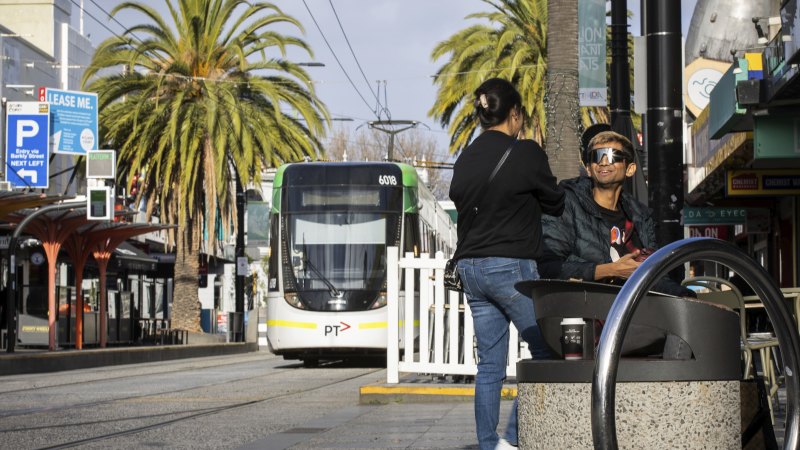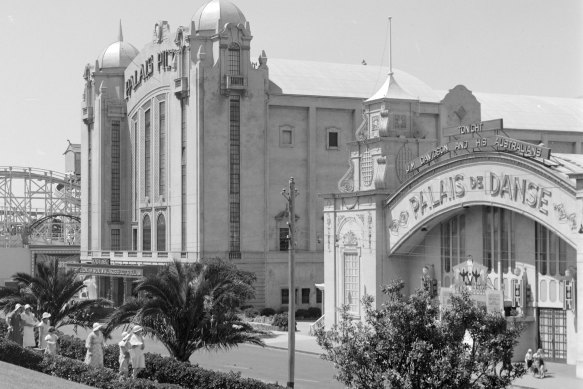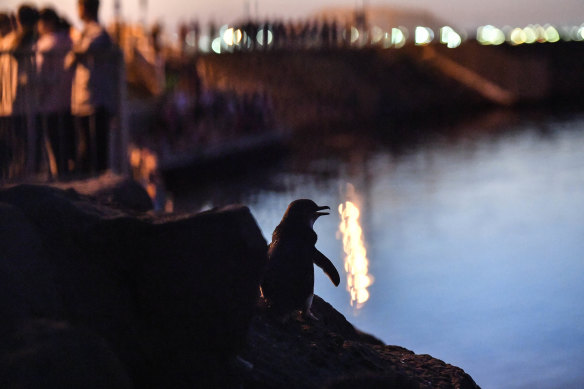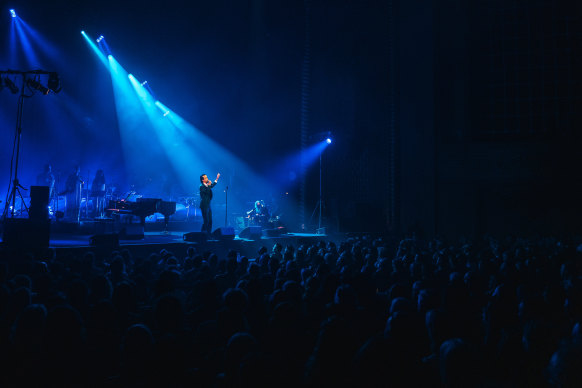Save articles for later
Add articles to your saved list and come back to them any time.
Growing up in Melbourne’s sprawling outer south-eastern suburbia in the ’70s, I remember my dad reminiscing about the St Kilda of his youth – how he used to take girlfriends out to the St Moritz ice-skating rink or the famed Palais de Danse next to the Palais Theatre.
Later, I would hear my older brothers crashing home drunk at 3am after seeing The Boys Next Door or Radio Birdman at St Kilda’s Crystal Ballroom, which was home to Melbourne’s fledgling post-punk scene. AccaDacca lived in a share house on Lansdowne Road, East St Kilda in the early 1970s.
As a teenager ready to escape suburbia, St Kilda beckoned. I first moved into a Barkly Street flat at 16, before returning to buy an art deco apartment in the same street 30 years later. I had lived north-side for two decades, but St Kilda somehow drew me back.
St Kilda has always been a suburb on the edge, in both its proximity to the shoreline and as a hub for artists, musicians, misfits and pleasure-seekers. Its rich history is one of boom and bust cycles – from being a favoured playground for Melbourne’s elite in the 1920s, to its post-war transformation into Melbourne’s red-light district, when the number of rooming houses surged and it became the meeting place for the city’s queer community.
Palais Theatre (left) and the Palais de Danse, circa 1934.Credit: State Library of Victoria
The Roaring Twenties was also when the St Kilda Football Club claimed their 10th wooden spoon after just 21 years in the VFL. In 1899 they got the lowest score ever recorded in a VFL/AFL match – one point – against Geelong. The Saints have only won a single premiership since then, in 1966, which gives them a permanent underdog status that somehow fits the character of the suburb.
During WWII, American soldiers had stayed at the art deco Prince of Wales Hotel, a venue that went on to host drag shows throughout the ’70s and ’80s. Who could forget the poolroom at the back of the Prince in the late ’80s, where Melbourne’s gay community cavorted to the blaring drone of Iggy Pop and Lou Reed on the jukebox.
Tourists flock to watch penguins at St Kilda pier in 2020.Credit: Joe Armao
For decades there’s been talk about the gentrification of St Kilda, and certainly The Block’s makeovers of the former Gatwick Hotel and Oslo House Hostel adds fuel to that claim. The revamped Espy may have lost its sticky carpet of yesteryear, but it still hosts some of the best local and international acts around.
And while it’s true that St Kilda is a suburb where the homeless rub shoulders with the nouveau riche, in my mind it retains its bohemian grittiness by virtue of the socio-economic diversity of its inhabitants. There’s still plenty of poverty here, evident in the homeless sleeping on Fitzroy and Acland streets and the daily queues at Sacred Heart soup kitchen. We live side-by-side with drug users and sex workers who are also part of our community’s fabric.
The longer I’ve lived here, the more I’ve become drawn into the hidden magic of St Kilda’s village-like community, which is visible when you scratch beneath its rough surfaces. There are the old Russian ladies who share their life stories as we soak in the thermal spa at the St Kilda Sea Baths, and Dave at my local cafe who knows my name and always offers friendly greetings. St Kilda is awash with characters from near and far who have chosen this gem as their home.
But it’s the realness of St Kilda that grounds it and keeps it from tipping over the edge into generic gentrification. Give me that any day over an endless parade of SUVs and absurdly overpriced Victorian terraces (although in fairness, we do have those too).
Nick Cave on stage at the Palais Theatre in November 2022.Credit: Rick Clifford
St Kilda in the past 20 years also became derided as Melbourne’s ground zero for backpackers. They come from all over the globe – the UK, Ireland, Colombia, Brazil – you name it. They can at times be bloody annoying (try navigating through drunken packs of Brits behaving like soccer hooligans down Grey Street at midnight, or the stench of piss out the front of your home on a Sunday morning – not that it can always be blamed on backpackers) but they add much to St Kilda’s transient, youthful energy.
And yes, we’ve all heard the stereotypes about homeless people in laneways and syringes on St Kilda beach (something I’ve never once witnessed). People love to bitch about St Kilda, but most locals believe it’s the best place to live in the world. The truth lies somewhere in between. It’s a suburb where we take the good with the bad.
Like many shopping strips across Melbourne, many Acland and Fitzroy Street shopfronts have remained empty or had a churn of tenants since COVID. Some lay the blame with the closure of Acland Street to cars; others blame the explosion in online shopping and rising rents. Port Phillip Council has tried to curb this problem in Fitzroy Street with its Renew program that has given over empty shopfronts to artisans to increase foot traffic and bring life back. Acland Street may need to adopt a similar approach if it is to return to its former glory.
The charms of St Kilda are found in simple daily pleasures, like hearing the scenic railway rattling around Luna Park as it has since 1912, a daily trip to the foreshore to glimpse the sunsets across Port Phillip Bay, visiting the little penguins at the end of the pier, eating a chocolate kugelhopf from Monarch Cakes, reading a book in the botanic gardens or strolling along Fitzroy Street on a warm evening as it teems with people, music and food into the wee hours.
On such nights one gets the fleeting sense that life here is comparable to living in New York’s East Village, or at least as close as you’re likely to get in Oz. While walking with my partner on the Esplanade one of those nights, a spruiker offered us at-cost tickets to see US singer Rodriguez – one of my favourite all-time performers – playing that night at the Palais. Only in St Kilda!
For a boy from the ’burbs, St Kilda quenched my desire for a more worldly life – and I’m still hooked.
James Norman is a freelance writer.
The Opinion newsletter is a weekly wrap of views that will challenge, champion and inform your own. Sign up here.
Most Viewed in National
From our partners
Source: Read Full Article



